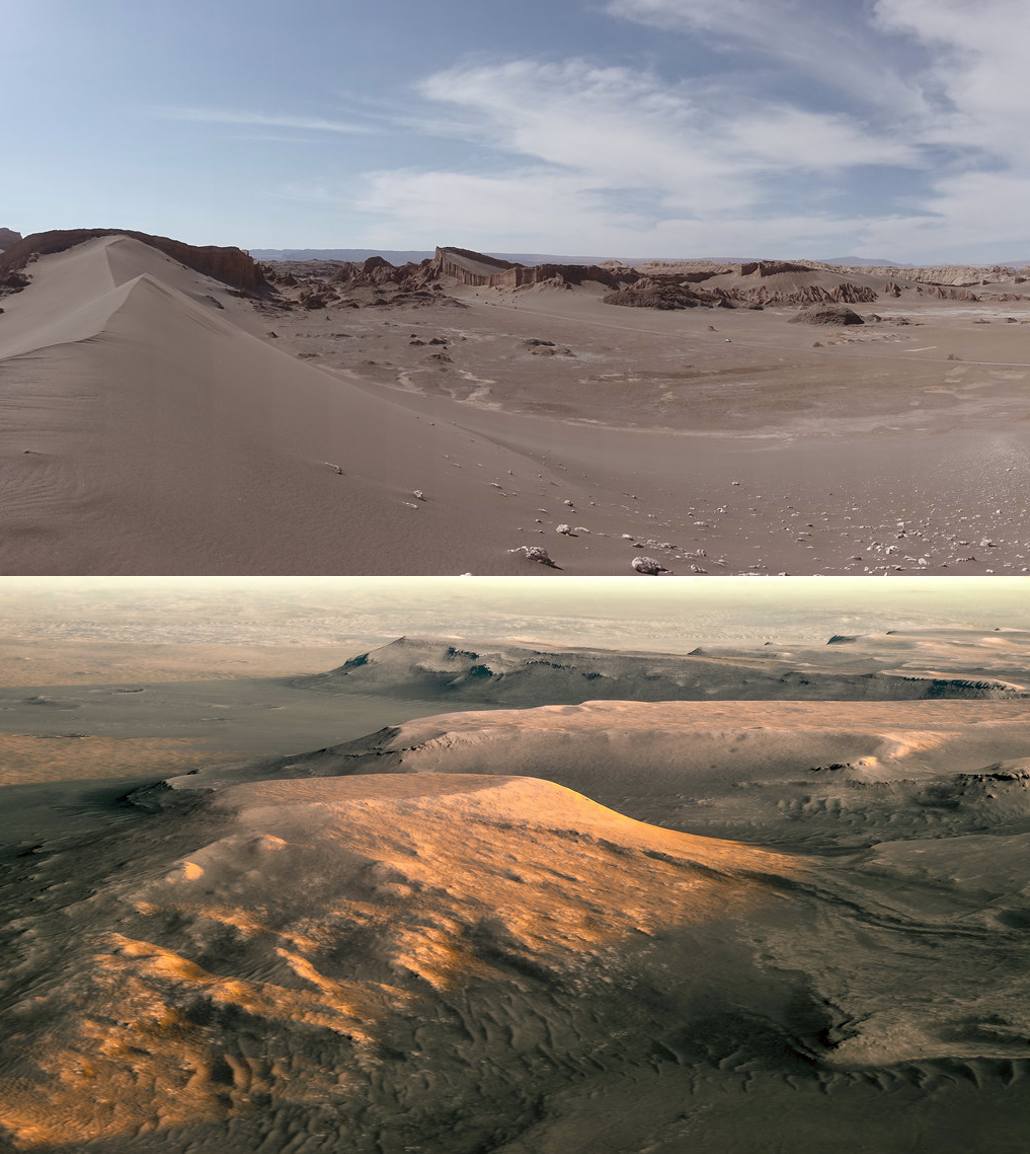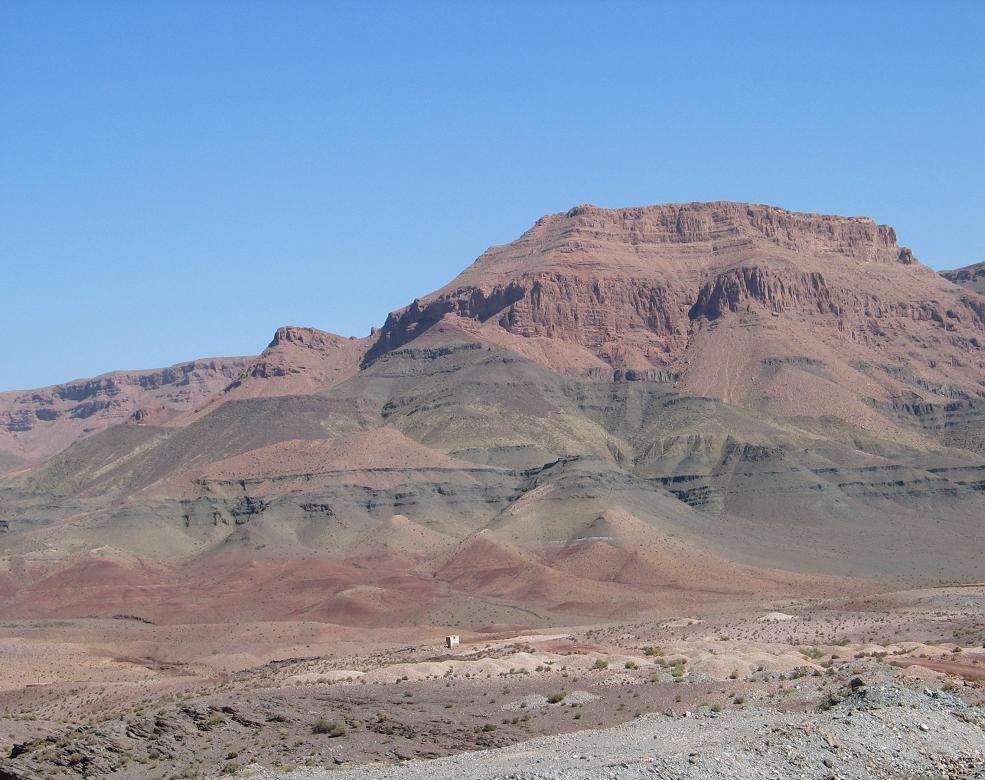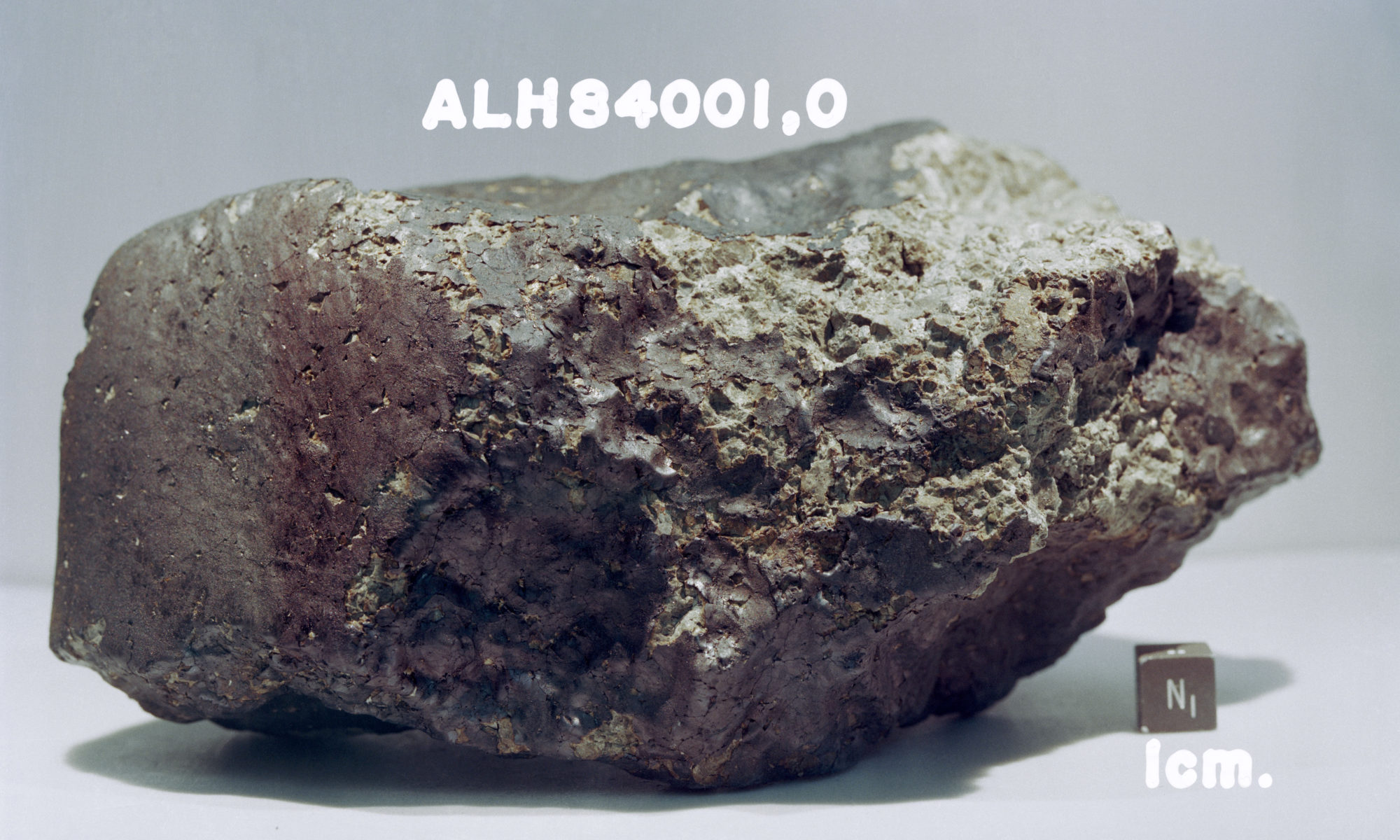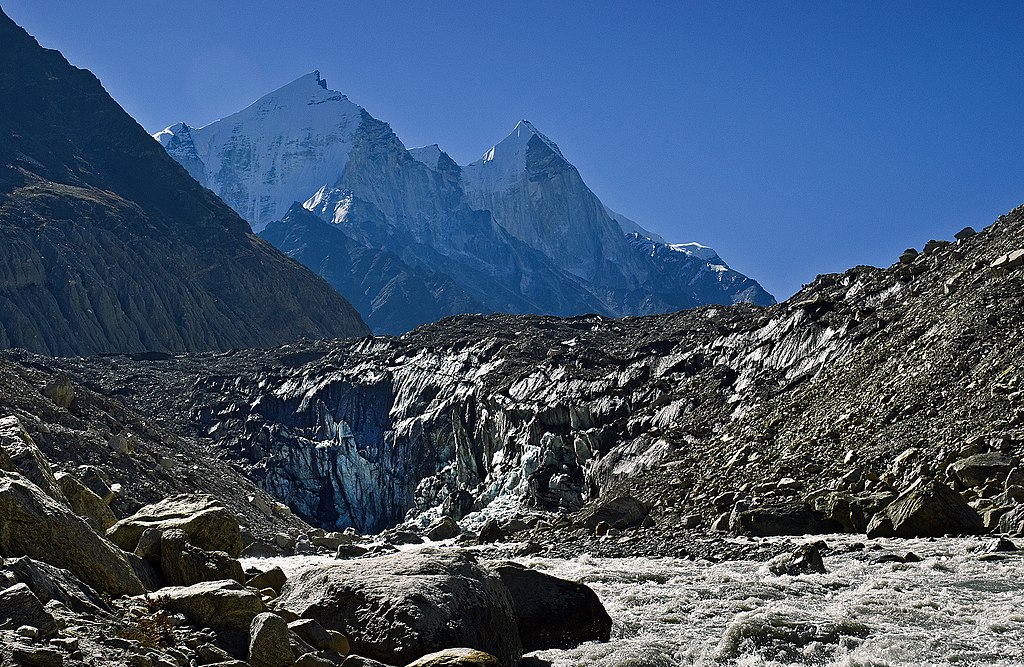Featured Image: Top: Valley of the Moon, Atacama Desert, San Pedro, Chile, Earth. Image courtesy Alf Igel. Bottom: Jezero Crater, Syrtis Major Quadrangle, Mars. Image courtesy Kevin M. Gill.
Paper: Gradient studies reveal the true drivers of extreme life in the Atacama Desert
Authors: D. Boy, R. Moeller, L. Sauheitl, F. Schaarschmidt, S. Rapp, L. van den Brink, S. Gschwendtner, R. Godoy Borquez, Francisco J. Matus, M. A. Horn, G. Guggenberger, J. Boy
Space. The final frontier. Or is it? Boy and colleagues are not presenting the voyages of the Starship Enterprise, rather the clever investigation of scientists on Earth. Their continuing mission: to understand the development of life in extreme environments, and how certain places on Earth geologically represent Mars and other planet analogues. While Boy and colleagues are limited on intergalactic travel, their recent work clearly the defines expectations, inferences, and consequences of using a site on Earth as a replacement for another planet. They conclude that the nearby climate and environment surrounding these analogue locations may lead to inaccurate comparisons, by altering soil moisture and salt content, for example.
Continue reading “To understand Mars, scientists study Earth – but is this enough?”






